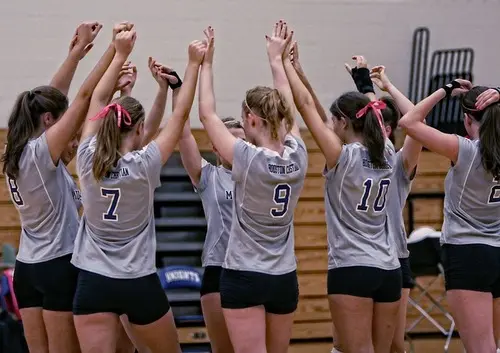Rules for Volleyball Player Positions

Rules for Volleyball Player Positions and Rotational Responsibilities
Volleyball is a dynamic team sport that requires each player to understand their position and rotation responsibilities. Knowing these rules enhances team coordination and efficiency. This article will explain volleyball player positions, their roles and how rotations work in the game.
Understanding Volleyball Player Positions
A volleyball team consists of six players on the court at any given time, each assigned a specific position. These positions determine where a player stands and what role they play in both offense and defense.
Each position has unique responsibilities that contribute to the team’s overall performance.
Setter
The setter is a crucial player who acts as the playmaker for the team. Their primary responsibilities include:
- Setting up attacks by delivering accurate sets to hitters.
- Running the offense and making strategic decisions.
- Playing in the back row for defense and serving.
The setter usually positions themselves near the net, particularly around the right front area, to receive passes and distribute the ball effectively.
Outside Hitter (Left Side Hitter)
The outside hitter is an essential attacker who contributes to both offense and defense. Their role includes:
- Spiking the ball from the left side of the court.
- Blocking opposing right side hitters.
- Receiving serves and playing defense in the back row.
Outside hitters must have strong hitting skills and reliable defensive abilities to cover a large area of the court.
Opposite Hitter (Right Side Hitter)
The opposite hitter plays on the right side of the court and is responsible for:
- Attacking from the right side.
- Blocking the opponent’s outside hitters.
- Supporting defensive plays in the back row.
This position requires strong attacking and blocking skills, as well as the ability to play defensively.
Middle Blocker (Middle Hitter)
Middle blockers specialize in defense at the net. Their responsibilities include:
- Blocking attacks from opponents.
- Spiking quick sets from the setter.
- Transitioning between front row and back row play efficiently.
Middle blockers need good reflexes and timing to succeed in both offensive and defensive aspects of the game.
Libero
The libero is a defensive specialist who wears a different colored jersey and has specific playing restrictions. Their main responsibilities include:
- Receiving serves and digging attacks.
- Playing exclusively in the back row.
- Cannot attack or serve (except in some leagues).
The libero is typically the most skilled defensive player on the team and plays a key role in ball control.
Defensive Specialist
Similar to the libero, the defensive specialist focuses on defensive plays. Their role includes:
- Substituting for players who are weaker in defense.
- Providing strong serve reception and digging skills.
Unlike the libero, a defensive specialist can serve and rotate into the front row if needed.
Volleyball Rotational Responsibilities
Volleyball has strict rotational rules that ensure fairness and structure in the game. Players must rotate positions each time their team gains the serve after winning a rally. The key aspects of rotation are:
Rotational Order
- Players rotate in a clockwise direction.
- The new server moves from the right front to the back right position (position 1).
- The cycle continues, with players rotating one position forward each time the team wins the serve.
Rotational Faults
A team can be penalized for rotational violations, such as:
- Players switching positions before the serve is made.
- Being out of order according to the lineup given to the referee.
Proper rotation is essential to avoid point deductions and ensure smooth gameplay.
Front Row vs. Back Row Responsibilities
Players are divided into front row and back row positions, each with specific rules:
- Front row players (positions 2, 3 and 4): Can attack the ball from anywhere, including near the net.
- Back row players (positions 1, 5 and 6): Can only attack from behind the 10 foot line (attack line).
- The setter and libero often operate from the back row to maintain rotation balance.
Overlapping Rules
Overlapping occurs when a player is not in the correct rotational order at the moment the ball is served. To avoid this:
- Back row players must stay behind front row players in their respective rotation columns.
- Right side players must stay to the right of middle players and left side players must stay to the left.
Substitutions and Rotational Adjustments
Teams can substitute players for strategic purposes while following substitution limits (varies by league). Common strategies include:
- Bringing in a defensive specialist to strengthen the back row.
- Substituting a setter for a stronger blocker in the front row.
- Using multiple libero substitutions to improve serve reception.
Conclusion
Understanding volleyball player positions and rotational responsibilities is key to playing effectively. Each player has a specific role that contributes to the team’s overall success, from setting and hitting to blocking and defending. By mastering rotation rules and positioning strategies, teams can optimize their performance and maintain a structured, competitive playstyle.
Whether you’re a beginner or an experienced player, knowing these rules will help you develop better teamwork and coordination on the court.


